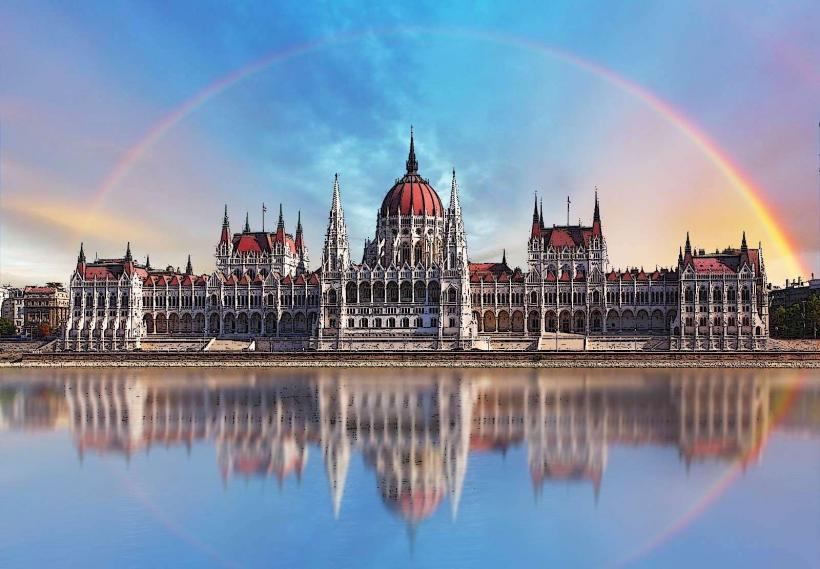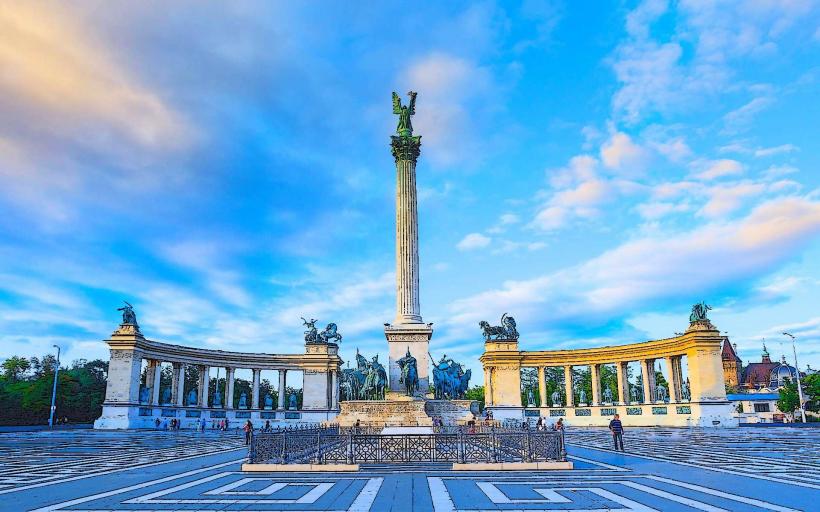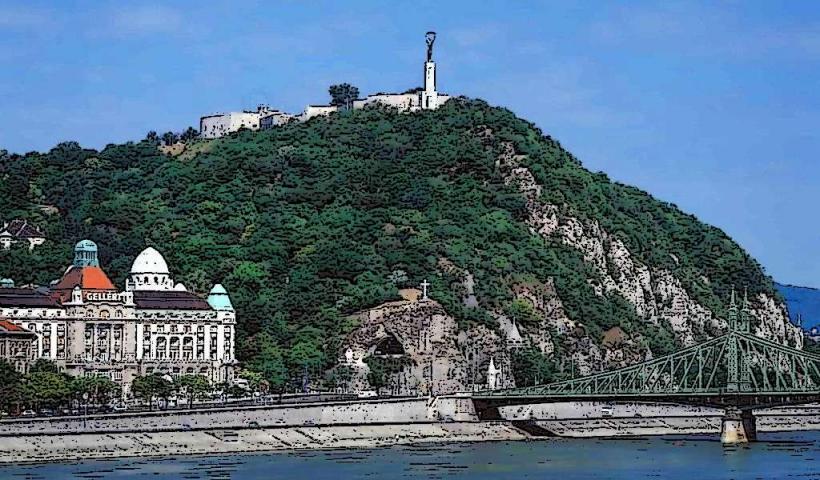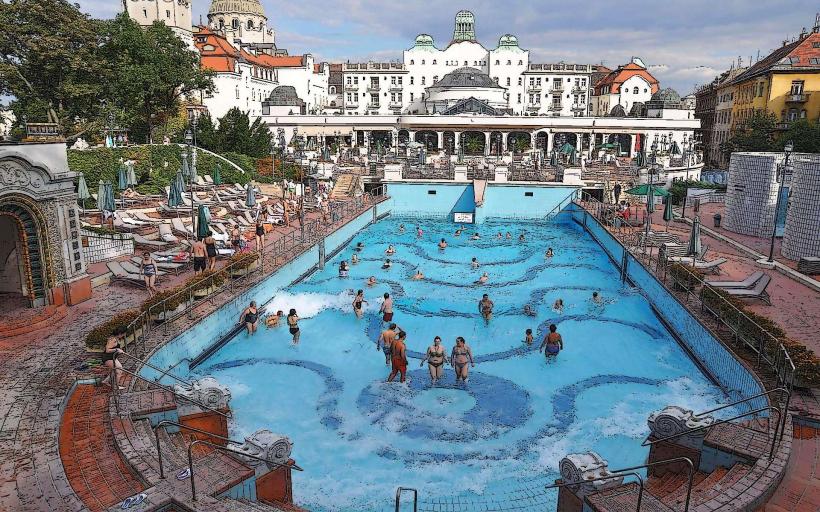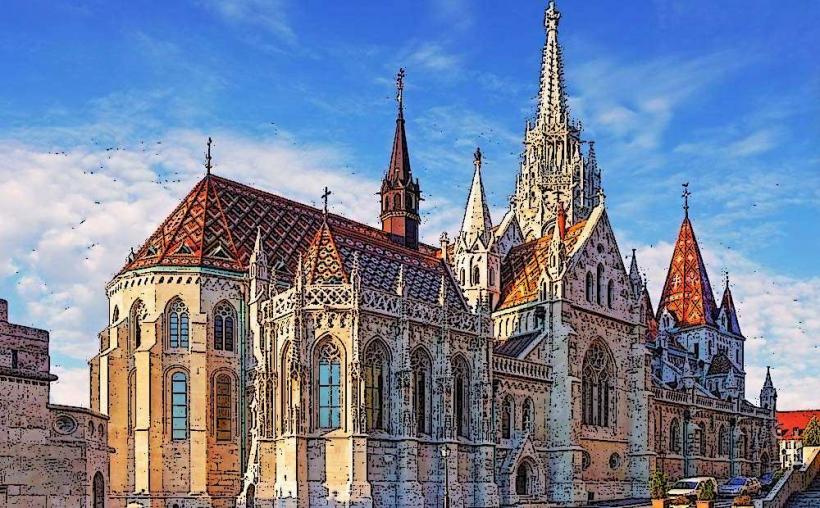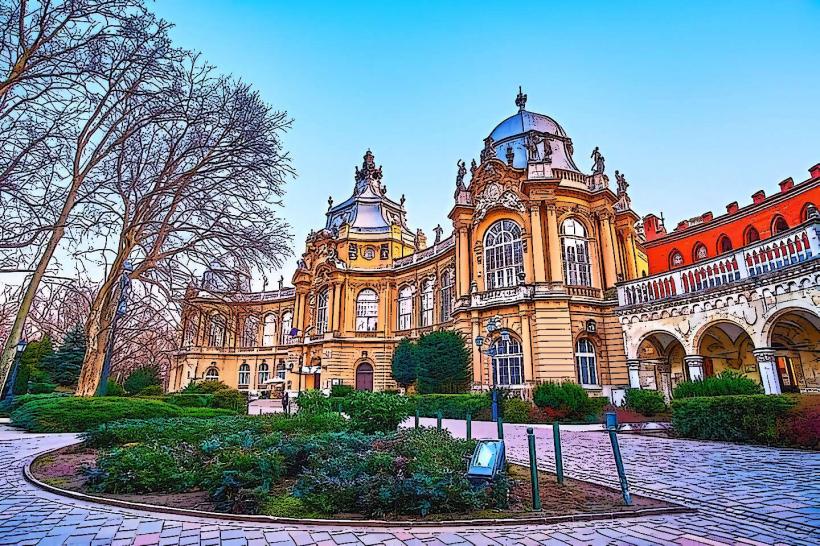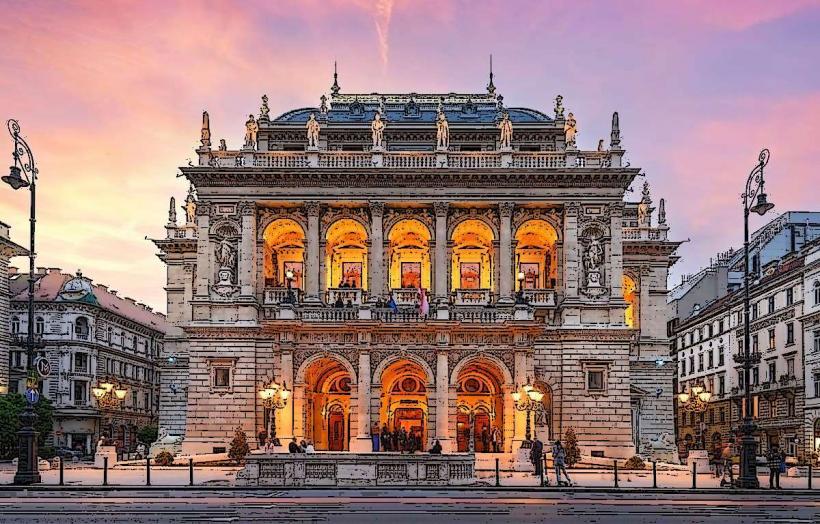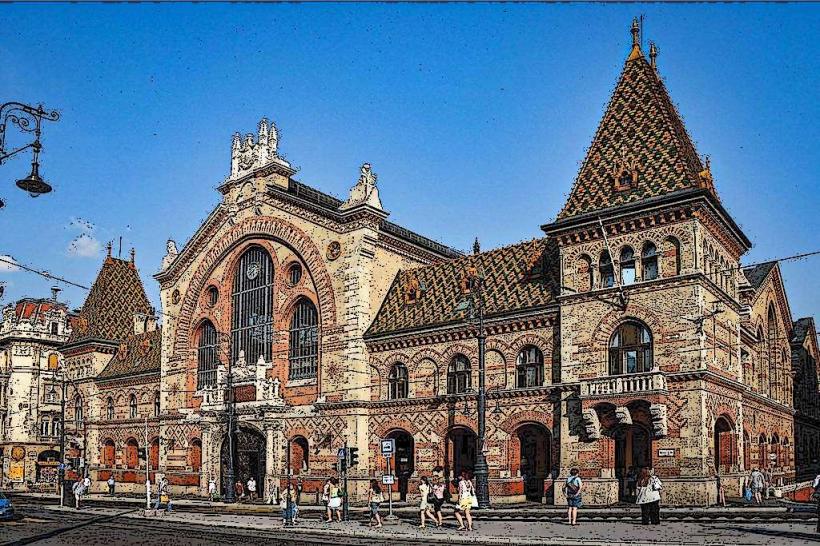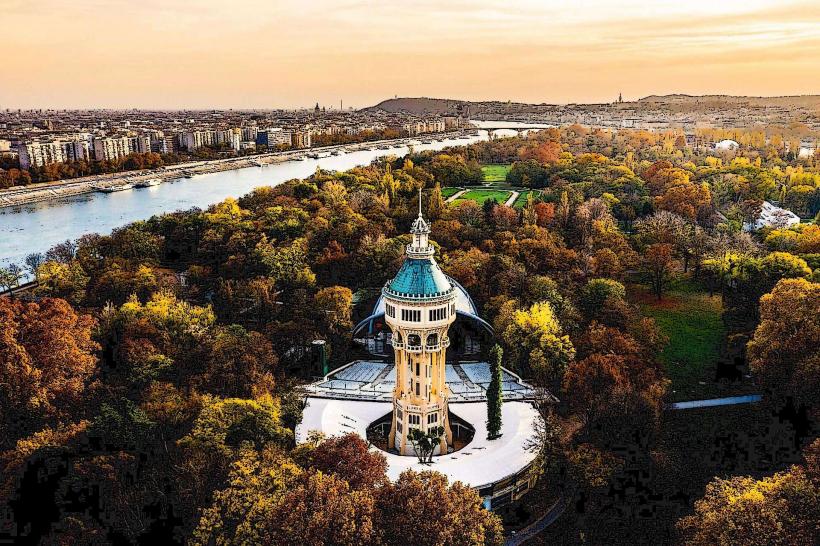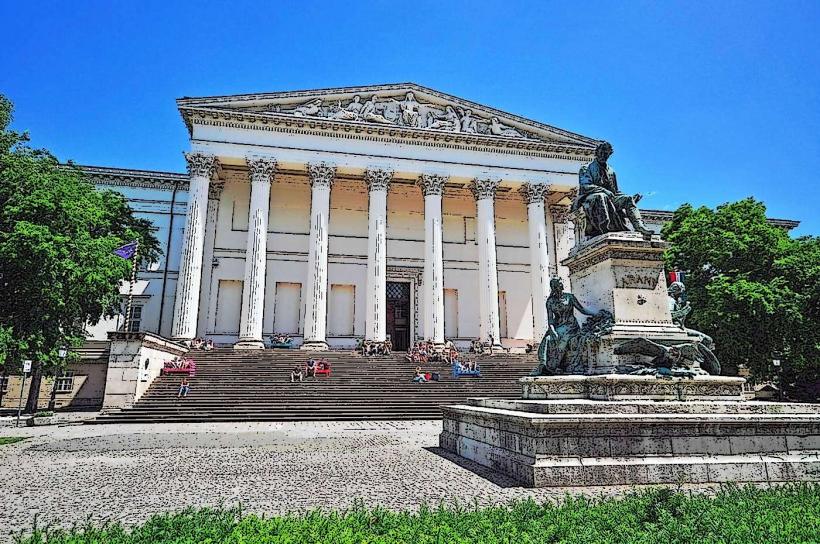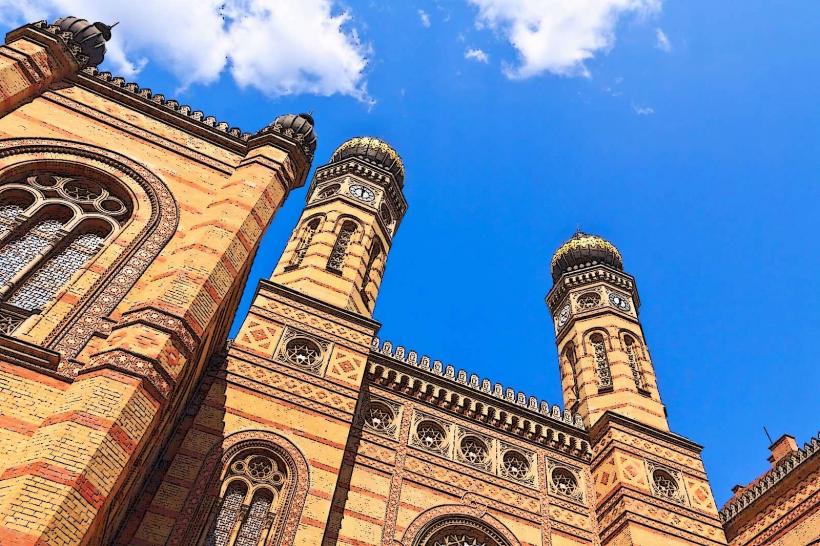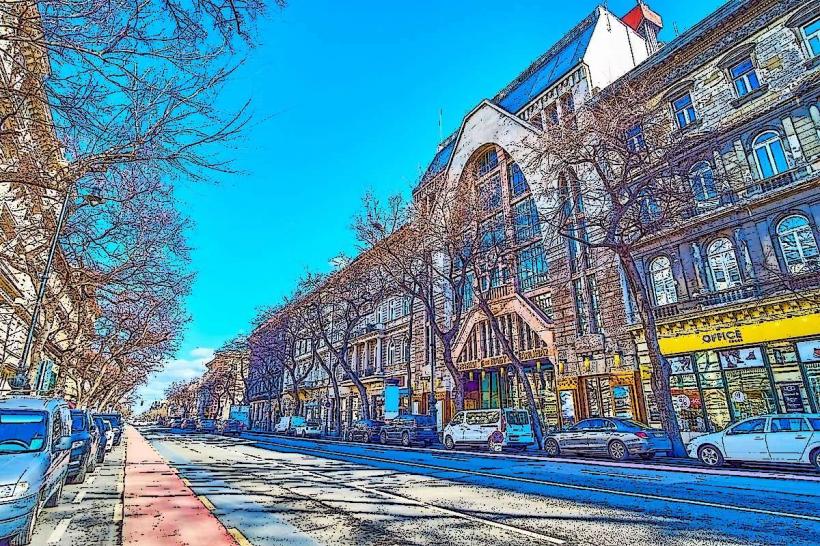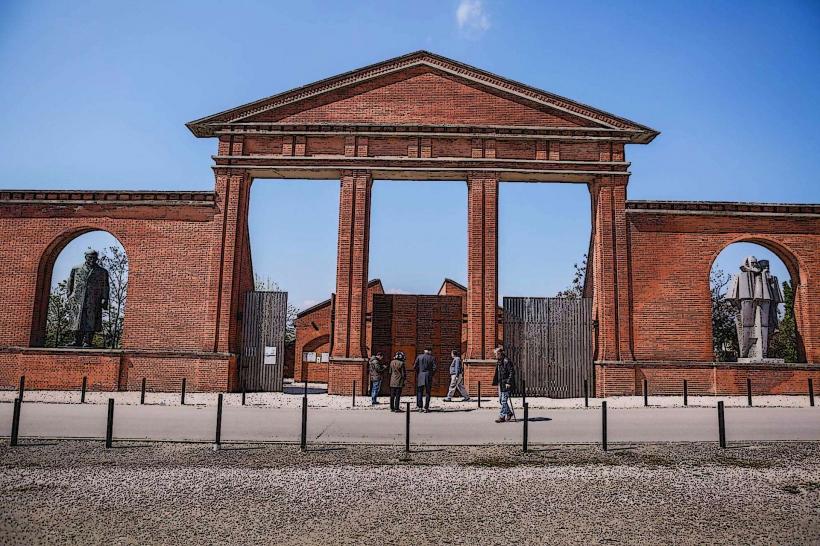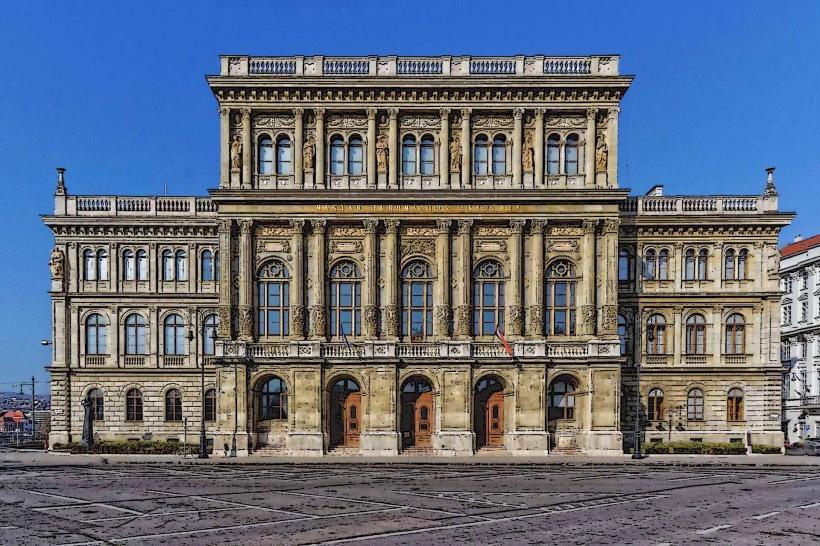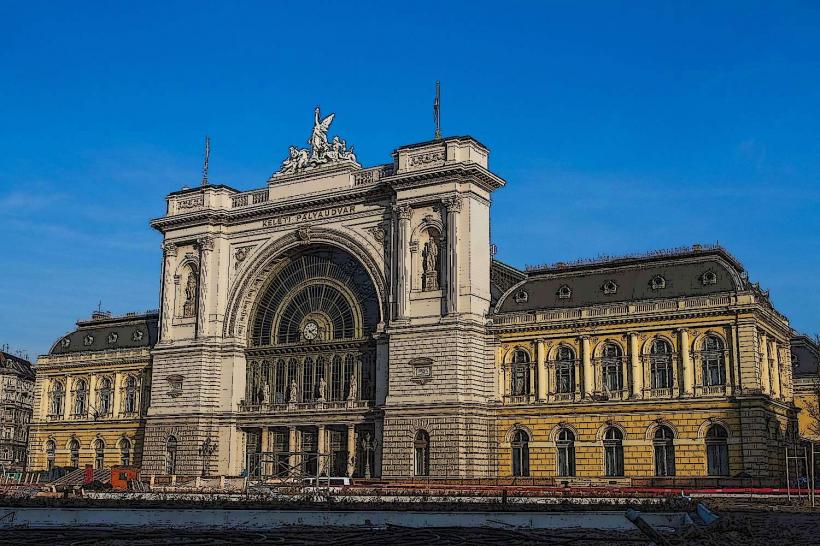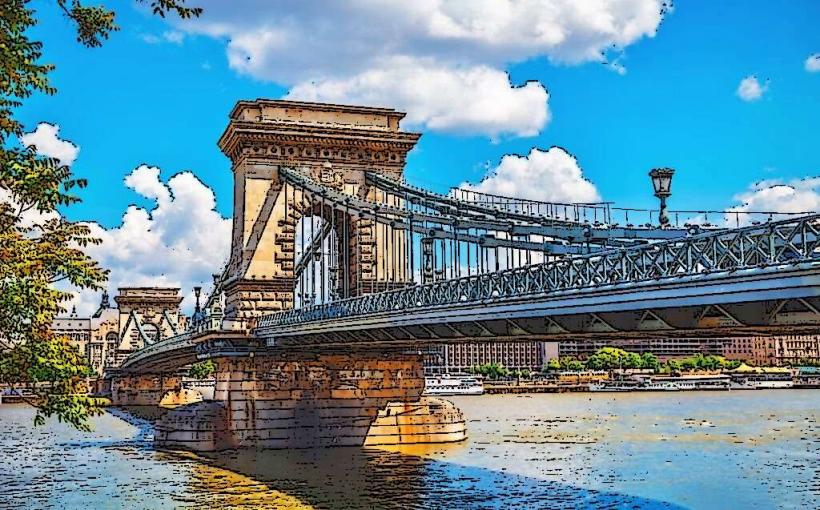Information
Landmark: Széchenyi Thermal BathCity: Budapest
Country: Hungary
Continent: Europe
Széchenyi Thermal Bath is one of the largest and most famous thermal bath complexes in Budapest, Hungary, and it is one of the most iconic landmarks in the city. Located in City Park (Városliget), it is part of Budapest's rich thermal bath culture, dating back to Roman times, and has been in operation in its current form since the early 20th century.
History
Origins: The bathhouse was originally built in the late 19th century, but it was in 1913 that the Széchenyi Thermal Bath complex was completed and officially opened. The construction of the bath was funded by the Hungarian aristocracy, with the aim of providing an opulent place to relax and enjoy the therapeutic waters from natural hot springs beneath the city.
Architectural Style: The Széchenyi Bath building was designed in neo-baroque style, with grand, palace-like interiors and exteriors. The bathhouse’s architecture is one of the most impressive in Budapest, showcasing ornate facades, grand staircases, and beautiful arches. The design of the baths reflects Hungary's cultural emphasis on health and wellness.
Restorations and Modernization: Over the years, Széchenyi Bath has undergone several renovations to maintain and improve its facilities. These updates include the addition of modern features while still preserving the historic charm of the building.
Thermal Waters and Health Benefits
The Széchenyi Bath is famous for its thermal waters, which are sourced from two natural springs located beneath the bath complex. These waters are rich in minerals, particularly calcium, magnesium, and hydrocarbonate, and are known for their healing properties.
Temperature: The thermal water in the outdoor pools is typically around 38°C (100°F), while the indoor pools are slightly cooler, usually around 30-36°C. The warm waters are believed to be beneficial for a range of conditions, including musculoskeletal problems, joint pain, circulation issues, and skin diseases.
Healing Effects: Many people visit Széchenyi Bath to experience the therapeutic effects of the water. The complex includes both thermal baths for relaxation and medical treatment as well as swimming pools for recreation.
Main Features and Pools
Széchenyi Thermal Bath offers a wide variety of pools and spa services, making it a versatile destination for both relaxation and wellness treatments.
Outdoor Pools
- Main Thermal Pool: The iconic outdoor thermal pool, where visitors can enjoy hot thermal waters while taking in the beautiful surroundings of City Park. This pool is often crowded with both locals and tourists and has a relaxing, communal atmosphere.
- Fun Pool: In addition to the main thermal pool, there is also an outdoor swimming pool with jets and water features, perfect for those looking for a bit of fun and exercise in the water.
- Jacuzzi: There is also a whirlpool for those who prefer a bit more of a spa experience with massaging water jets.
Indoor Pools
- The indoor thermal pools are situated in the grand, historical part of the complex, under the neo-baroque ceilings. There are several pools, each with slightly varying temperatures, from cooler pools to the warmest ones. These are ideal for those who want to relax away from the crowds.
- Saunas: The bathhouse also offers various sauna facilities, including steam rooms and dry saunas, which complement the thermal treatments. These help with detoxification and provide a further boost to health and wellness.
Medical and Wellness Treatments
- In addition to the therapeutic waters, Széchenyi Thermal Bath offers a range of spa treatments, such as massages, facial therapies, and mud baths.
- It is also home to physiotherapists who offer specialized treatments using the healing properties of the water to address musculoskeletal issues or injuries.
Private and VIP Sections
For a more private experience, there are VIP sections with exclusive access to smaller, quieter pools and additional services such as personalized massages.
Visiting Széchenyi Bath
Location
- Széchenyi Thermal Bath is located in City Park (Városliget), near Heroes' Square and the Museum of Fine Arts. It is easily accessible by public transport, particularly the M1 metro line, which stops at Széchenyi Fürdő station right in front of the bath.
Opening Hours
- The bath is open every day of the week, and it remains open until late in the evening (typically 6 AM to 10 PM or later). The outdoor pools remain open year-round, even during winter, and can be particularly magical when the surrounding area is covered with snow.
Tickets and Prices
- Tickets for the Széchenyi Thermal Bath vary depending on the type of ticket (general entry, VIP entry, etc.) and whether you opt for additional treatments such as massages. There are often discounts for group bookings or family packages.
- Entry includes access to the thermal pools, but special treatments such as massages or sauna sessions may require additional fees.
Cultural and Social Importance
Széchenyi Thermal Bath is not just a place for relaxation; it is a cultural institution in Budapest. It holds an important place in the Hungarian wellness culture, and the tradition of using thermal baths for therapeutic and social purposes is deeply embedded in Hungarian life.
Social Experience: The thermal baths in Budapest have long been a place for social interaction. Locals often gather at Széchenyi to relax, socialize, and enjoy the communal experience of the bath. The combination of relaxation and socializing in the warm waters makes Széchenyi a beloved local institution as well as a key destination for tourists.
Spa Culture: Széchenyi Thermal Bath is part of Budapest’s wider spa culture, where many thermal baths have been a part of daily life for centuries. These baths are integral to Budapest’s reputation as the “City of Spas” (a title given due to the abundance of natural hot springs in the area).
Conclusion
Széchenyi Thermal Bath is an iconic and essential part of Budapest’s cultural, historical, and wellness landscape. Whether you’re visiting to experience the therapeutic benefits of the thermal waters, relax in the beautiful neo-baroque surroundings, or simply take part in the rich social tradition of the bathhouses, Széchenyi provides an unforgettable experience. It is not just a place to soak in the healing waters but also a glimpse into Hungary’s long-standing spa culture.



